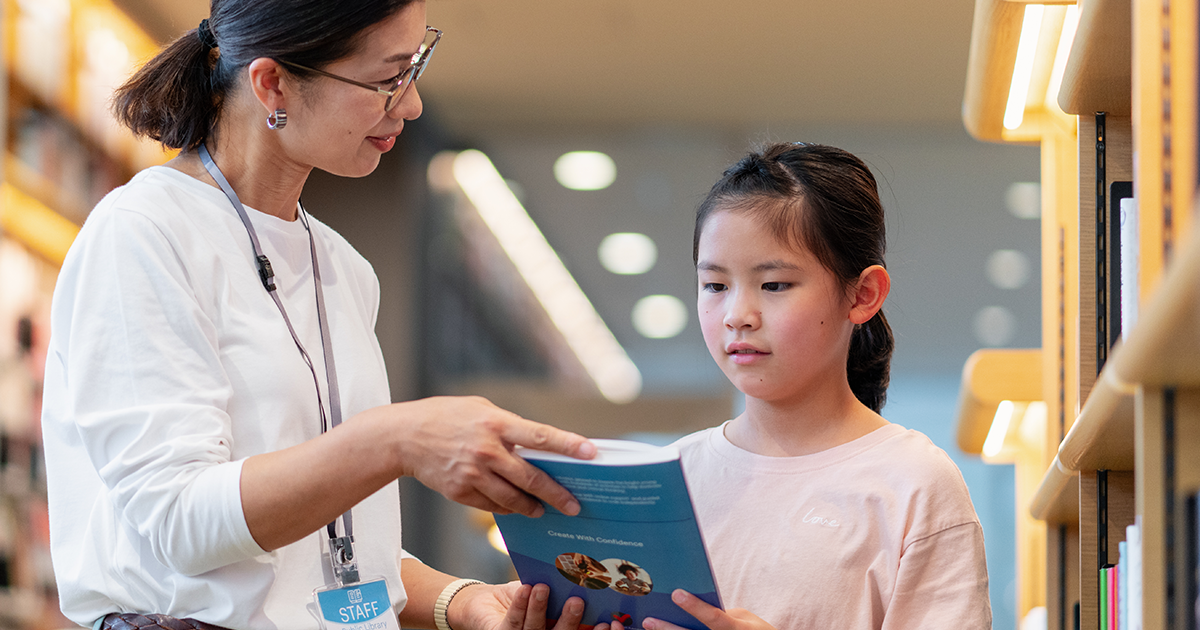My classroom libraries over the years were pretty ambitious. Eighth graders from my first years will remember that I duct-taped Scholastic boxes together to create makeshift shelving. And the ninth and tenth grade students that I taught in Brooklyn will remember five floor-to-ceiling bookshelves in the back of our classroom that were always full. I loved that one entire wall of our English literature classroom was books, and reader/hoarder that I am, I filled every nook and cranny.
My favorite part, still, is that the students’ binders were in one of the bookcases in alphabetical order by last name, so their work was technically part of the collection, which therefore was always growing.
Modify these ideas as you see fit, and have students brainstorm the top ten things they want from their classroom library for good measure.
1. Use mailing labels to create bookplates for the books in your classroom library, or invest in a sturdy personalized stamp.
This will bring the collection together in both a visual and tactile way. My elementary school teacher had a stamp with her name in script that I remember vividly; for years my sisters and I had copies of The Baby-Sitters Club series in our house with J. Lichtenstein written in blue ink. Going full circle, there is now a DK Batman Encyclopedia out there in the world with WEBBER-BEY written on it in black Sharpie. I am pretty sure that I know who has it, but I am not mad. I have let a lot of books go.
2. Remove all loose book jackets and use them to decorate the classroom.
Book jackets get damaged inside students’ backpacks — and they are so pretty! Once you have a varied collection of book jackets on display, do a lesson about book design and have students talk about what they like and don’t like. Encourage students to create book jackets for their favorite book and wrap them around books in the classroom library.
3. Include ‘classroom librarian’ as one of your classroom jobs.
This person will be responsible for whatever circulation system you employ, keeping track of what books are borrowed and returned, and can help you with acquisitions (picking out new books) and deaccessioning (removing old, boring, and damaged books). And, of course, they will help you to keep everything in order.
4. Create a section or a spine label for student recommendations, as well as teacher and/or parent favorites.
The Scholastic Kids & Family Reading Report shows that kids get some of the best ideas of what to read from their friends, as well as parents, teachers, and librarians.
5. Make sure to include magazines and comics for readers who respond to visual storytelling.
Magazines are fairly inexpensive, and they will appeal to readers who are not into fiction, yet would be excited to read about topics such as cars, music, fashion, sports, science, current affairs, and entertainment. You could request help from your school’s PTA for subscriptions, have a bake sale, or ask your colleagues to donate popular trade magazines once they have finished reading them.
As a teacher, you also have access to Scholastic Classroom Magazines, which are only available for schools (they come with lesson plans!). Comic books and graphic novels are more expensive, so it is important to prioritize them when you are able to add to the collection. Get comic book series in bound volumes containing more than one issue. Remember that while hardcover comics and graphic novels can cost more, they will also last longer, which is important because these books will circulate a lot.
6. Get a newspaper subscription, particularly one with a good sports section.
My father and both of his parents consume the newspaper from cover to cover every day. You never know which student you may inspire to be a daily newspaper reader, checking stats and lottery numbers, reading the funnies and horoscopes. Many newspapers offer discounts for classroom subscriptions, however, one copy of the day’s paper in the room as part of the library collection offers tremendous opportunities for read-alouds, the evaluation of a primary source, and text to world connections.
Challenge your students to connect news topics to the plots of books in the classroom library.
7. Survey your students to find out what they are interested in.
This will help you figure out what magazines to subscribe to, what books to recommend, what materials to add to the collection, and what text-to-text, text-to-world, and text-to-self connections you can make in your lessons. Nowadays at Scholastic, I have the members of our employee reading club fill out a reading survey each year. Though we have been reading together for years, the answers change, and our reading interests shift as a group. Surveying your readers is a great way to connect with your students and establish reading goals and challenges for the year that they will be enthusiastic about.
This article was written by Deimosa Webber-Bey, MSLIS MSEd, Sr. Librarian, Manager at Scholastic Inc., where she leads a team of librarians that are responsible for the corporate archive and that answer reference and readers’ advisory questions for employees.
